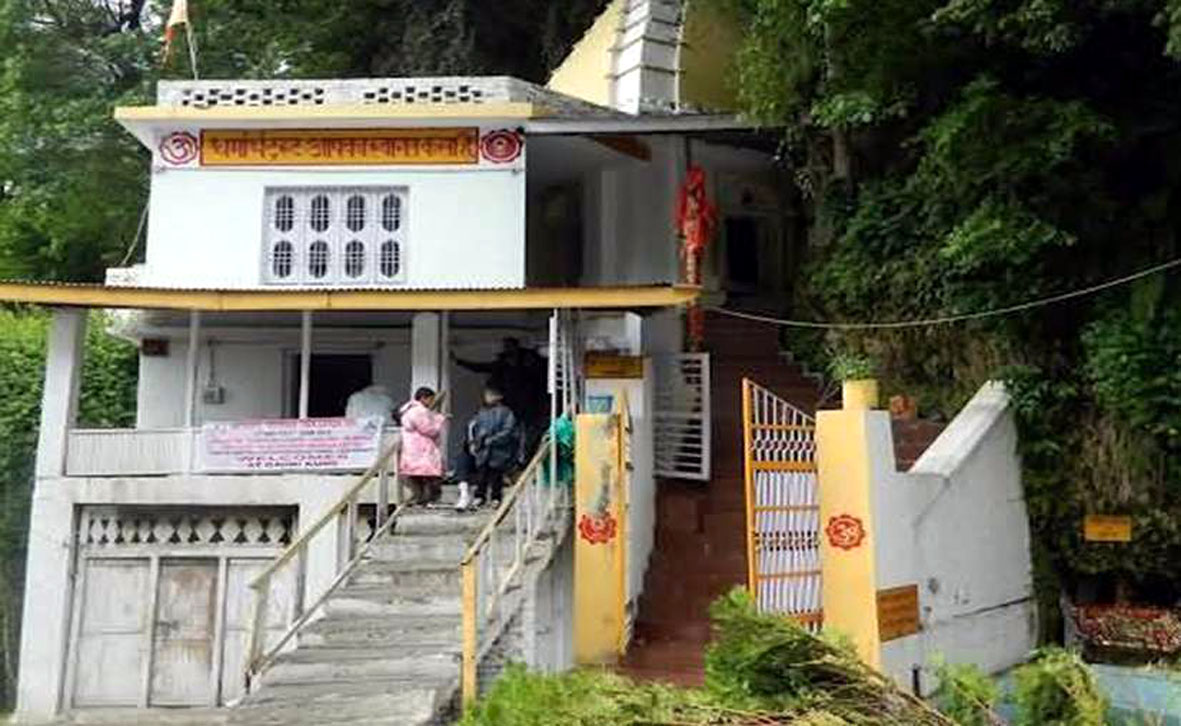Rajinder Chand Anthal
Gouri-Kund is the first place to visit during the pilgrimage of Sudhmahadev. It is situated at a distance of twenty kilometres from Chenani. Sudhmahadev is two kilometres ahead of this place. In ‘BARAH’ Puran Lord Shiva says that all the rivulets of the region where Parvati was born are sacred and there is water kund called UMA-KUND. In the holy books the pilgrimage of Gouri-Kund is recommended after conduct of CHAR DHAM YATRA. In the olden days, Gouri-Kund was connected by good bridal paths from Chenani, Benisangam, and Patnitop. This religious wonderland is now connected with Pacca road from Chenani.
Gouri-Kund is situated in the lower ridge extension of Dhar Shivgarh. A cold water rivulet originating from Dhar Shivgarh flows down near Gouri-Kund shrine. Entire hilly region surrounding Gouri-Kund has less vegetation but surprisingly the small extension of hill holding this Divine TIRTHA is densely covered by known and unknown species of plants having peculiar properties to remain evergreen throughout the year. It is said that the Ashoka tree and many other herbs and medicinal plants usually not found in Northern India are found at this place. The cutting of these trees is prohibited in this protected area considered to be the ‘VATICA’ of Goddess PARVATI. The magical beauty of this place cannot be described in words but it can only be felt at the first look of this place. The cool and pleasant atmosphere of this place is highly suitable for meditation. Impressed by the holiness and solitary atmosphere of this place, Goddess Parvati selected it for long term meditation.
Legends say that Goddess Parvati was the daughter of Raja Himachal. Mantalai was the capital of great empire of Raja Himachal. Goddess Parvati is said to be the AVTAR of SHAKTI. In Shaivism, she is the power of Shiva. Goddess Parvati has been described as Goddess of harmony, devotion, nourishment, and power. She is Devi in her complete form. In fact, Goddess Parvati was Devi Sati, the first wife of Lord Shiva who burnt herself alive in Yajna of her father Daksh PrajaPati. Sati was reborn and known as PARVATI, UMA, GOURI, APARNA, HAIMAVATI, and GIRINANDINI. In Duggar, Parvati is generally known as Gouri or Gourjan Mata. From very early age, Parvati devoted herself in deep meditation of Lord Shiva to get married with the Supreme God of the universe. At Gouri-Kund Goddess Parvati used to sit inside a small cave. Close to her seat of meditation, there is a milky water spring in which water comes out from the hill in drops and gets collected in a small kund. The sacred water kund in which Goddess Parvati used to bath is known as Gouri-Kund or UMA-KUND. It is said that Goddess Parvati in her deep meditation stopped eating food and for thousands of years she ate leaves of the plants only. In her later stage of meditation, she left eating leaves also and survived on air only. At this stage she attained ‘APARNA’ name. (APARNA means one who lives without eating even leaves). At this stage Lord Shiva was highly pleased and agreed to marry Goddess Parvati.
The water of Gouri-Kund flows into nearby rivulet coming from upper reaches of hillocks, thereby making the entire water pious for a Holy Bath. In fact the feet of Goddess Parvati touches the water of this rivulet daily hence the rivulet was named as CHARANVANTI. Some people call this rivulet as Gouri-Kund wale Devika. From Kud, Patnitop, and far off places people bring dead bodies for cremation on the Ghat of Gouri-Kund wale Devika. The water of this rivulet has same characteristics like of water of Holy Devika because after cremation the bones get absorbed in sacred water the next day.
The temple of Mata Gouri has been constructed on the side track of the Holy Kund. Beautiful idol of Goddess Parvati is installed there. On the inner side of the Temple there is GARAB-JOON (Tunnel for Purity). It is believed that after crossing ‘Garab-Joon’ one is relieved of all the sins. There is a meditation cave inside the main cave. On the other side of the meditation cave there is a long mysterious cave extending towards east direction. Elders of the area say that in the olden days some Sadhus used to visit Amar Nath Ji through this cave. To ensure human safety now this cave has been closed in the beginning. Temple architecture is unique and attractive. Due to unplanned and unskilled construction around the temple, both the temple and Holy Kund have lost their original glorious look. This shrine was initially managed by local Mahant family. Thereafter it was handed over to J&K Dharmarth Trust. Recently local committee has taken over from Dharmarth Trust but things on the ground have not changed.
People visit Gouri-Kund throughout the year, but a Holy Bath on first day of Sudhmahadev Mela is considered to be more pious and fruitful. It is mentioned in Hindu Religious Books that one who takes bath at Gouri-Kund will be free from all worldly sins.
(The author is former Zonal Education Officer, Chenani)
Trending Now
E-Paper


